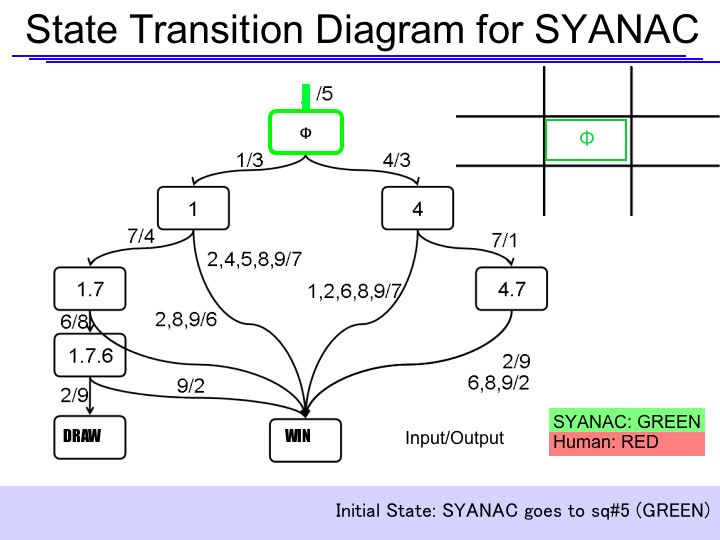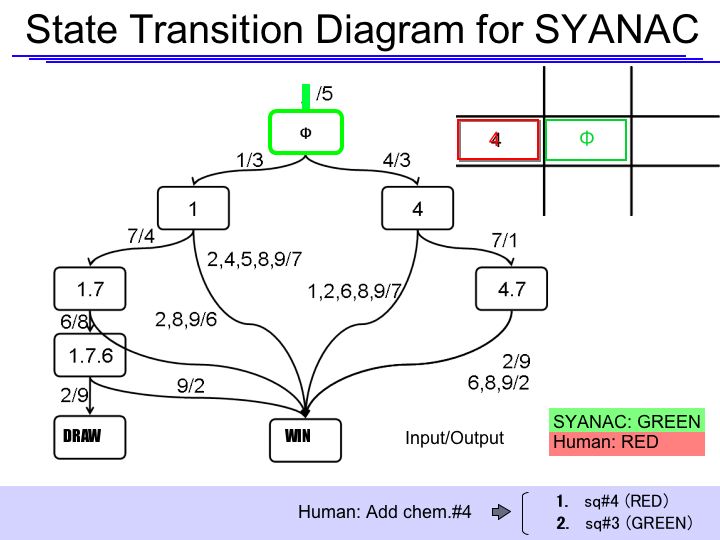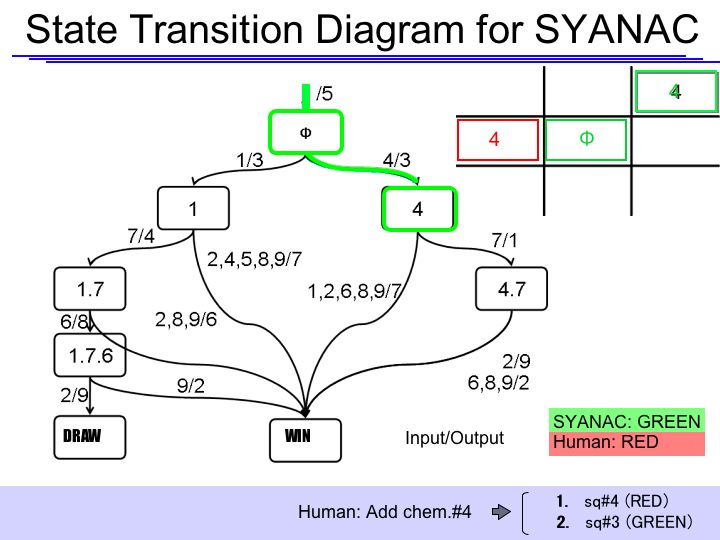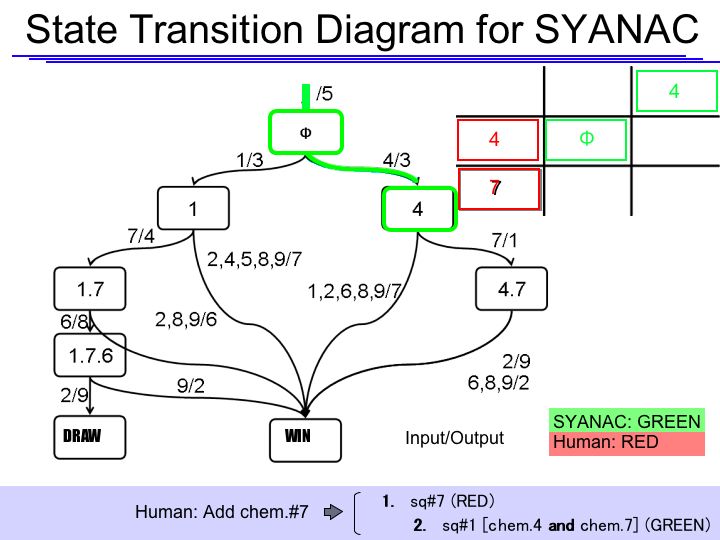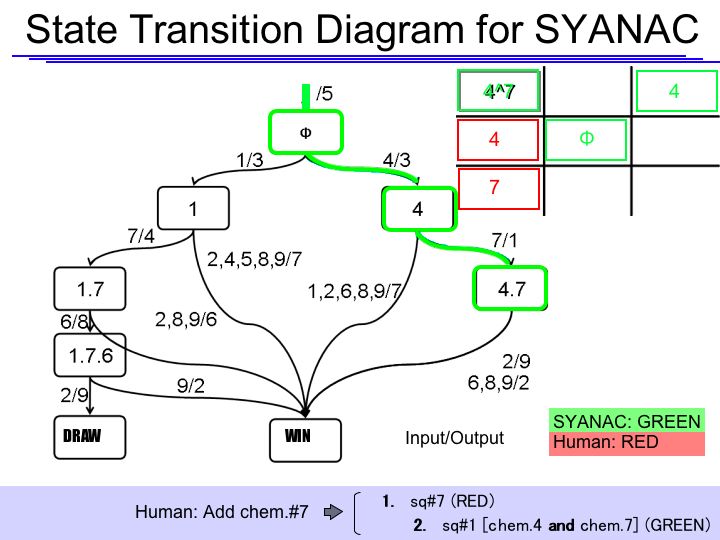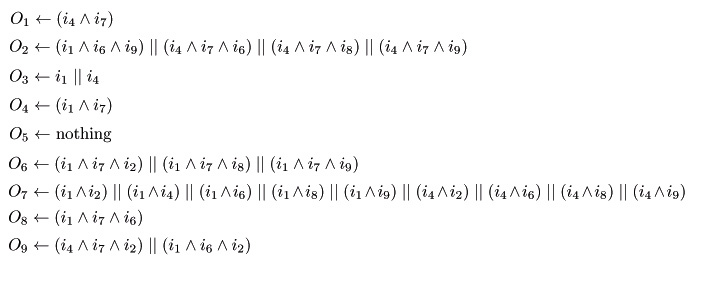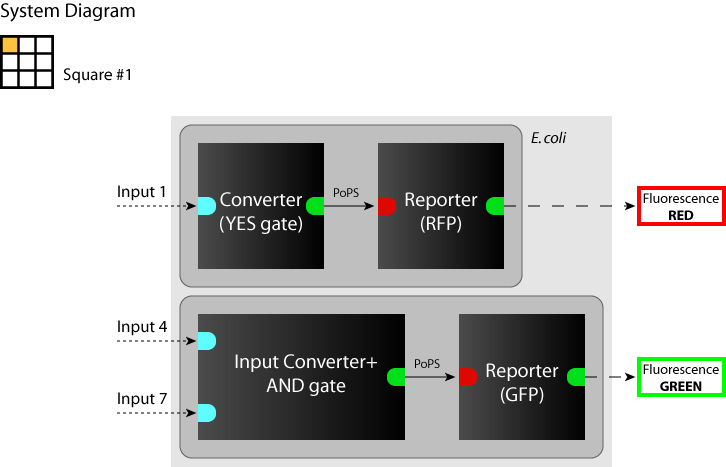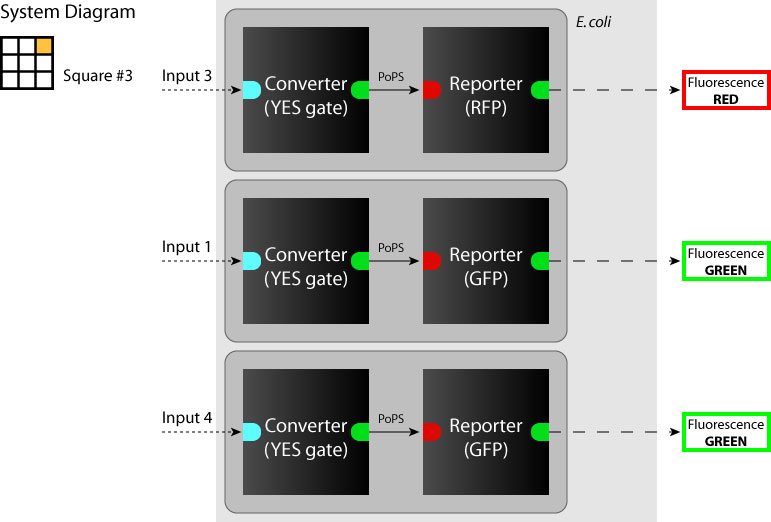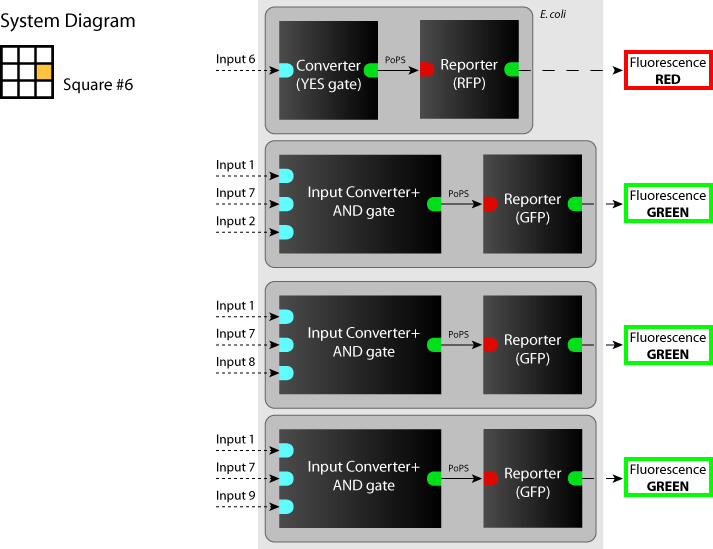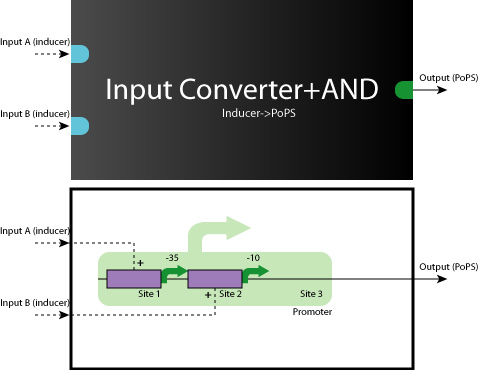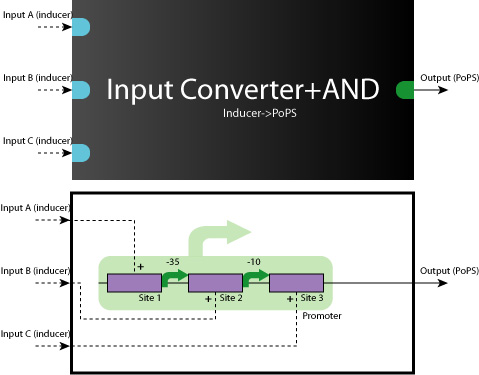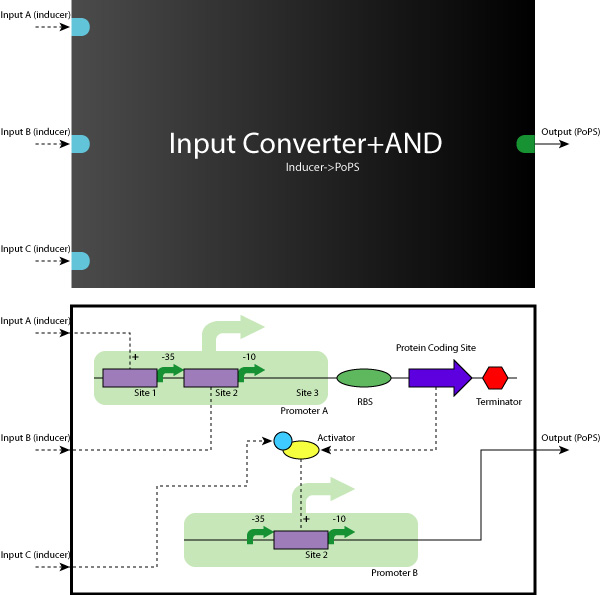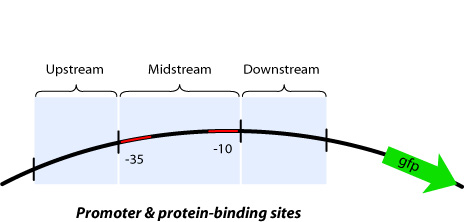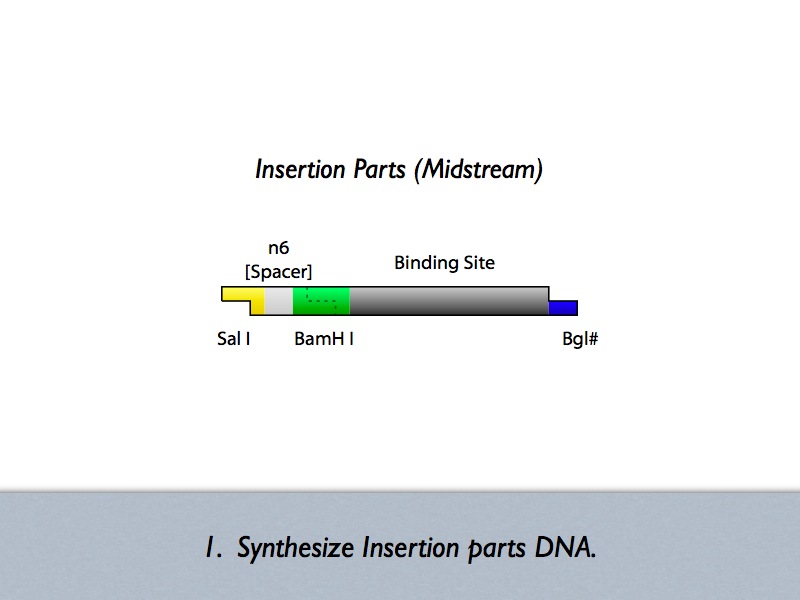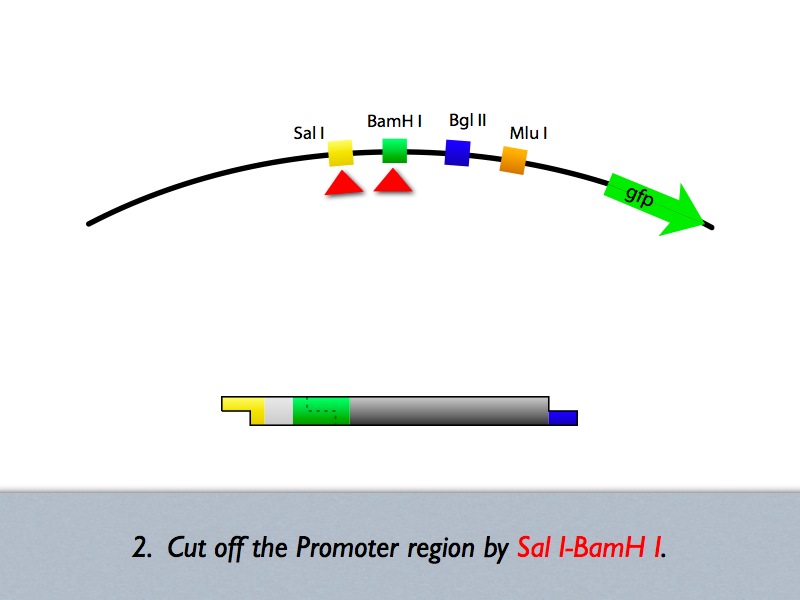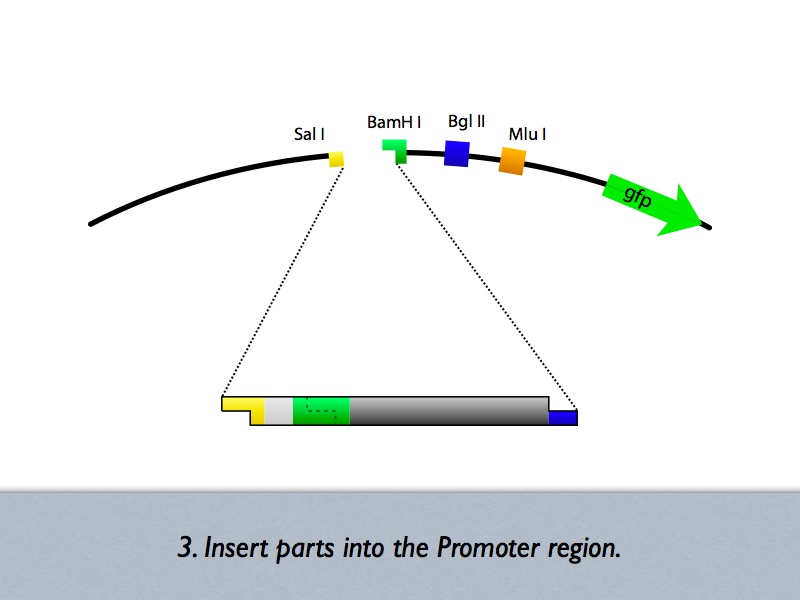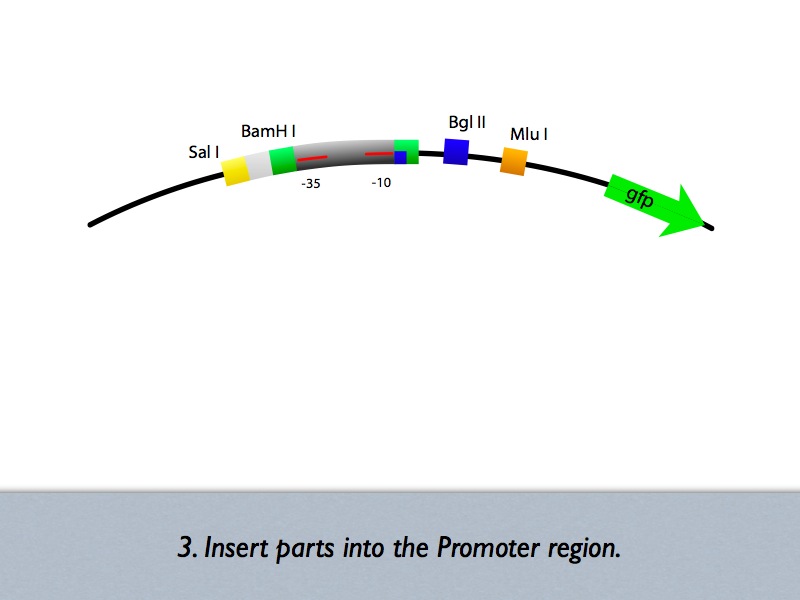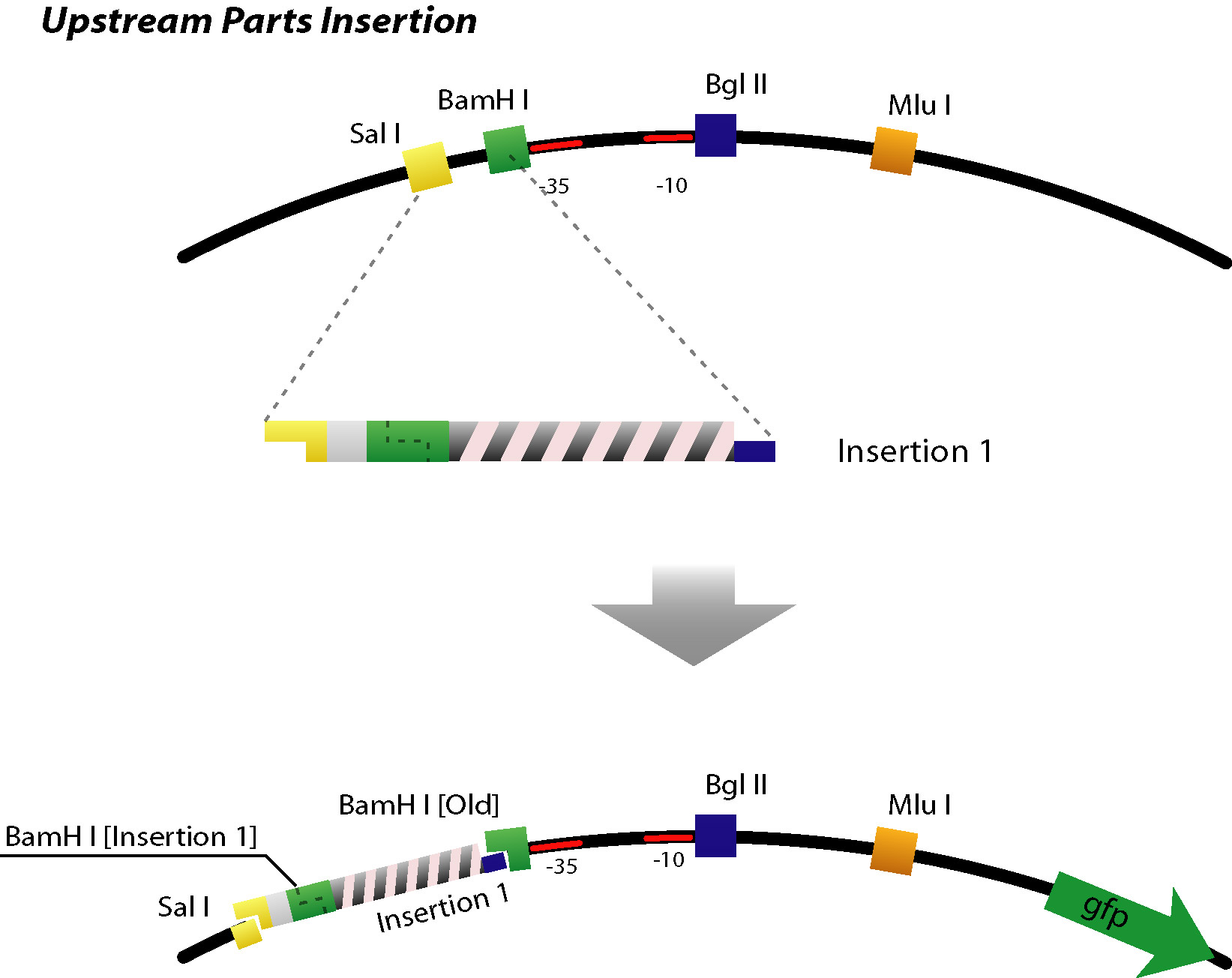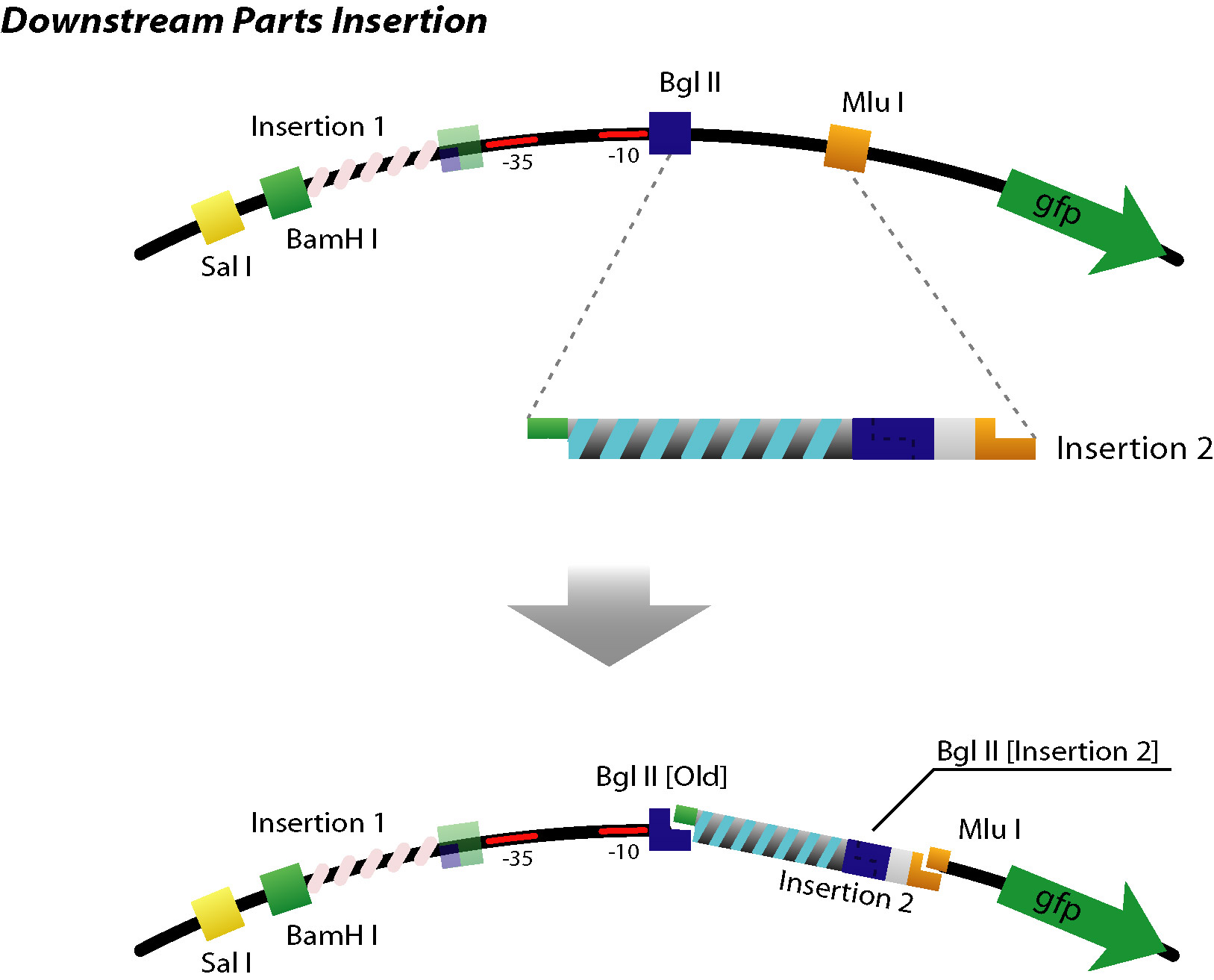Tokyo Alliance: Design/Method
From 2006.igem.org
(Difference between revisions)
| Line 43: | Line 43: | ||
Image:igem_tokyo_std_29.jpg | Image:igem_tokyo_std_29.jpg | ||
</gallery> | </gallery> | ||
| + | |||
| + | if we test all of the SYANAC's move, we can draw this STATE TRANSITION DIAGRAM for SYANAC. | ||
====Logic Gates==== | ====Logic Gates==== | ||
| + | |||
| + | When we examined ALL of the patterns in the State Transition Diagram, logic gates we need inside in each square will be like this. | ||
| + | |||
| + | |||
| + | |||
Here we show you the logic gates of each sq# according to the state transition. | Here we show you the logic gates of each sq# according to the state transition. | ||
Revision as of 20:08, 29 October 2006
Contents |
Systematic design concept/method
Abstraction Phase
State Transition Diagram
- Combination of Noughts-and-Crosses
- 362,880(=9!)[patterns] (sum up all patterns)
- 255,168 (As a game)
- 26,830 (Eliminating symmetrical pairs)
We added the following rules to reduce the number of transition functions and inputs.
- 1st
- SYANAC goes to the center of the board. (sq#5)
- 2nd
- Human goes to the specific corner(sq#1) or the edge(sq#4) of the board.
- 3rd
- SYANAC must choose sq#3
Therefore, SYANAC's conbination patterns and inputs are as follows:
- SYANAC
- 25 combination patterns(Eliminating symmetrical pairs)
- 7 types of inputs
The State Transition Diagram shown right describes SYANAC's behavior based on this rule.
State Transition Diagram Demonstration
if we test all of the SYANAC's move, we can draw this STATE TRANSITION DIAGRAM for SYANAC.
Logic Gates
When we examined ALL of the patterns in the State Transition Diagram, logic gates we need inside in each square will be like this.
Here we show you the logic gates of each sq# according to the state transition.
Block Diagram (System/Device)
- System
- Device
Construction Phase
Up/Mid/Downstream
working model
- AND Gate (Repressor+Repressor)
- AND Gate (Activator+Repressor)
DNA Construction Procedure
- Midstream Parts Insertion
- Midstream Parts Insertion Procedure (.mov) (Requires QuickTime)
- Up/Downstream Parts Insertion
- Next parts can be inserted with the same procedure. (Up/Downstream Insertion Parts)


